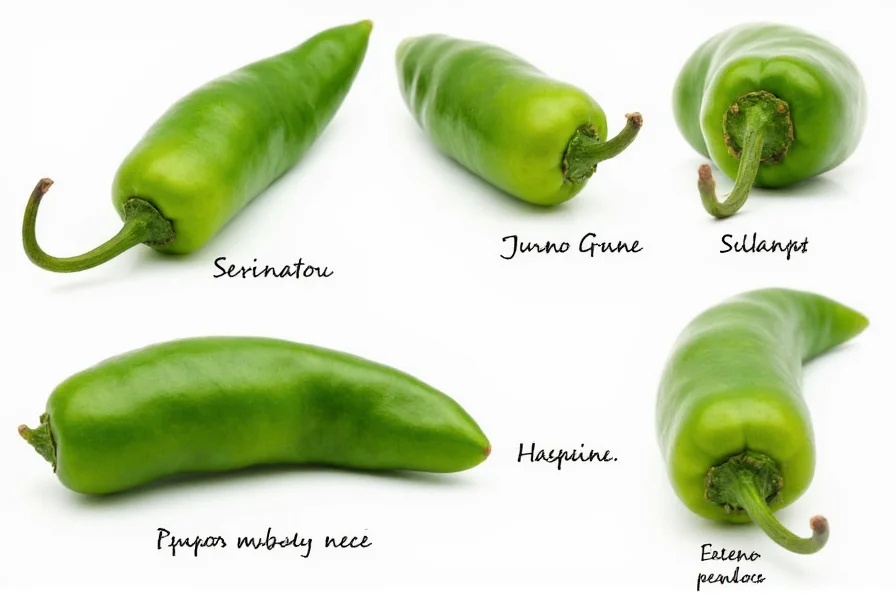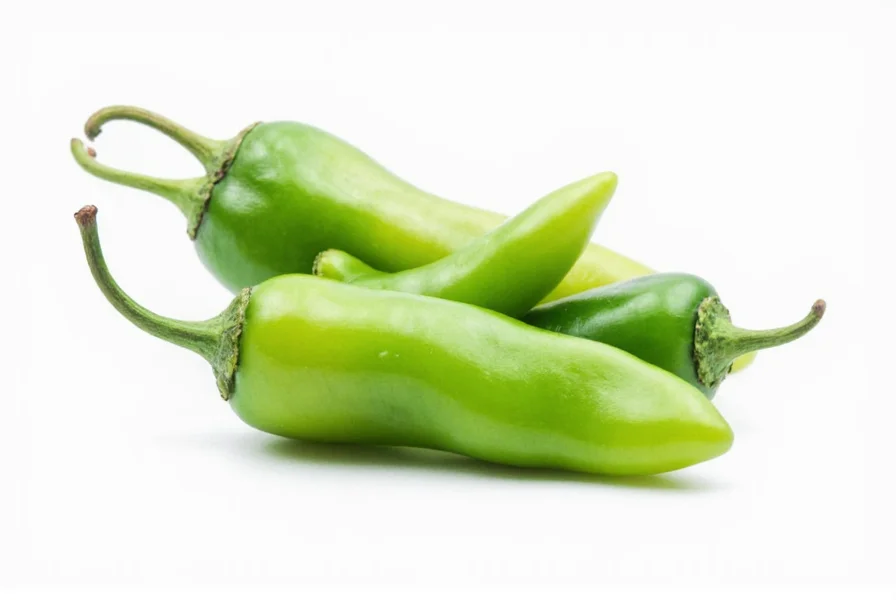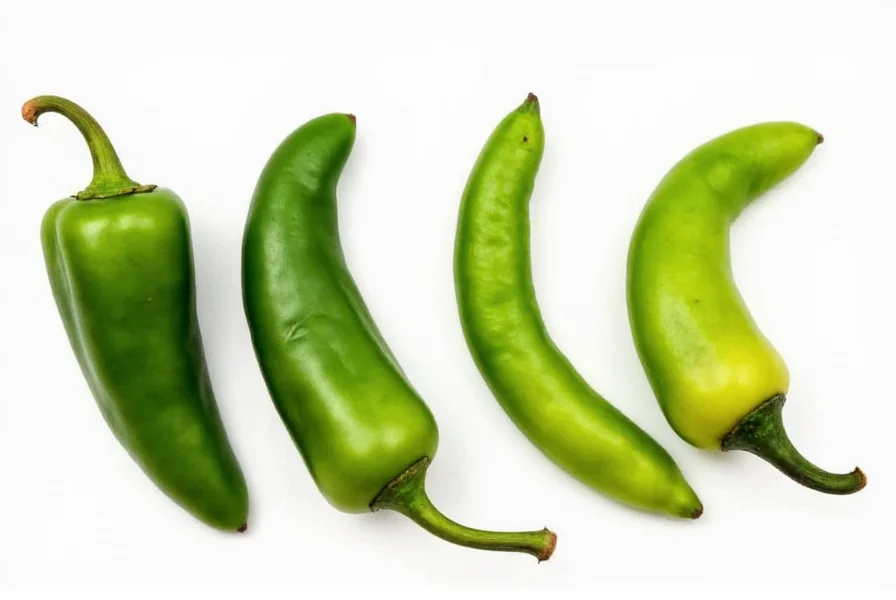When searching for images of serrano peppers, it's essential to understand their distinctive visual characteristics that differentiate them from similar chili varieties. These medium-heat peppers serve as a staple in Mexican cuisine and have specific appearance traits that help with accurate identification.
Visual Characteristics of Serrano Peppers
Serrano peppers (Capsicum annuum) display several key visual features that make them recognizable in photographs and real life. Understanding these characteristics helps when examining fresh serrano pepper appearance for cooking, gardening, or purchasing purposes.

Size and Shape
Unlike the plumper jalapeño, serrano peppers maintain a consistently slender profile throughout their length. They typically measure:
| Characteristic | Measurement |
|---|---|
| Length | 1-4 inches (2.5-10 cm) |
| Diameter | Approximately 0.5 inches (1.3 cm) |
| Shape | Straight or slightly curved with tapered end |
Color Progression
One of the most helpful aspects when viewing serrano pepper color stages is understanding their ripening process:
- Immature stage: Bright, vibrant green (most commonly found in markets)
- Mature stage: Transitions to brilliant red (most common mature color)
- Alternative mature colors: Some varieties ripen to orange, yellow, or even brown
The color change directly correlates with flavor development - green serranos have a grassy, bright heat while red versions develop fruitier notes with slightly less intense heat.
Serrano Peppers vs. Similar Varieties
When examining serrano pepper vs jalapeno images, several distinguishing features become apparent:

Key Differences from Jalapeños
- Size: Serranos are noticeably smaller and thinner than jalapeños
- Shape: Serranos maintain consistent thinness while jalapeños widen toward the stem
- Heat level: Serranos range from 10,000-23,000 Scoville units, significantly hotter than jalapeños (2,500-8,000)
- Growth pattern: Serranos grow pointing upward on the plant, while jalapeños typically hang downward
- Surface texture: Serranos have smoother, glossier skin compared to jalapeños' sometimes wrinkled appearance
Distinguishing from Other Peppers
When comparing how to identify serrano peppers against other common varieties:
- Compared to Thai chilies: Serranos are larger and less intensely hot
- Compared to cayenne: Serranos are shorter and thicker
- Compared to habaneros: Serranos lack the distinctive lantern shape and tropical fruit aroma
What to Look for in Quality Images
When searching for accurate serrano pepper plant images or fresh pepper references, look for these elements that provide complete visual information:
- Multiple angles showing the entire pepper
- Size reference (like a ruler or common object)
- Comparison with similar pepper varieties
- Images showing both immature (green) and mature (red) stages
- Clear depiction of the stem attachment point
- Natural lighting that shows true color representation
Practical Applications of Visual Identification
Accurate visual identification of serrano peppers serves several practical purposes:
Culinary Uses
Chefs and home cooks rely on proper identification when following recipes calling for serrano pepper size and shape specifications. The thinner walls of serranos compared to jalapeños affect how they cook and hold up in salsas, pickling, and roasting applications.
Gardening Reference
For gardeners examining serrano pepper plant images, recognizing the distinctive upward-growing pods helps monitor plant health and determine optimal harvest times. Healthy serrano plants produce peppers that start green and gradually change color as they mature on the vine.
Purchasing Guidance
When shopping for fresh serranos, understanding their typical appearance prevents confusion with similar-looking varieties. Look for firm, glossy peppers without wrinkles or soft spots, regardless of whether they're in the green or red stage.











 浙公网安备
33010002000092号
浙公网安备
33010002000092号 浙B2-20120091-4
浙B2-20120091-4